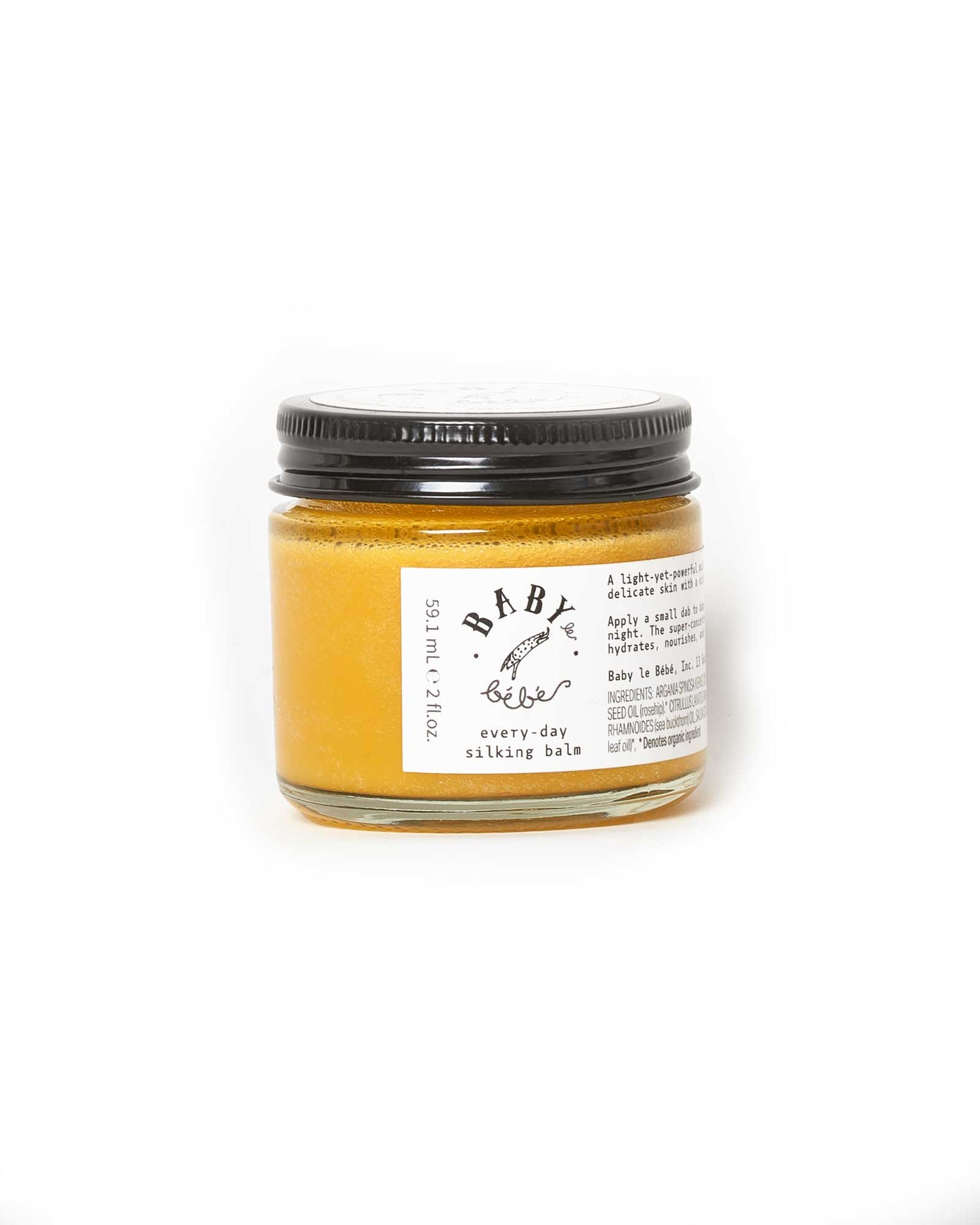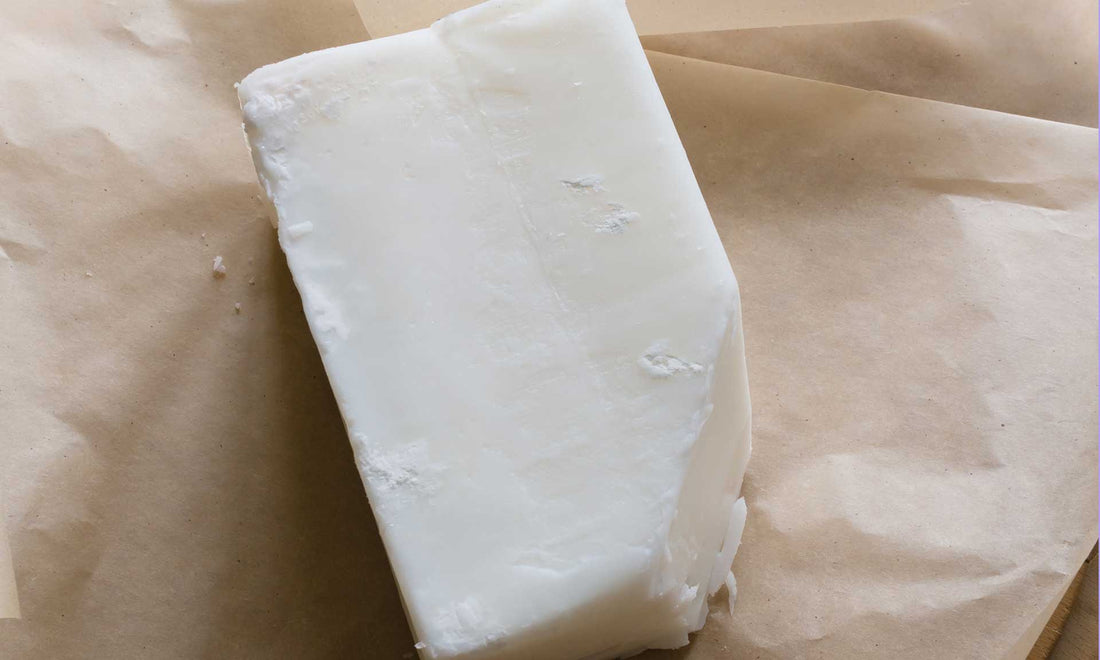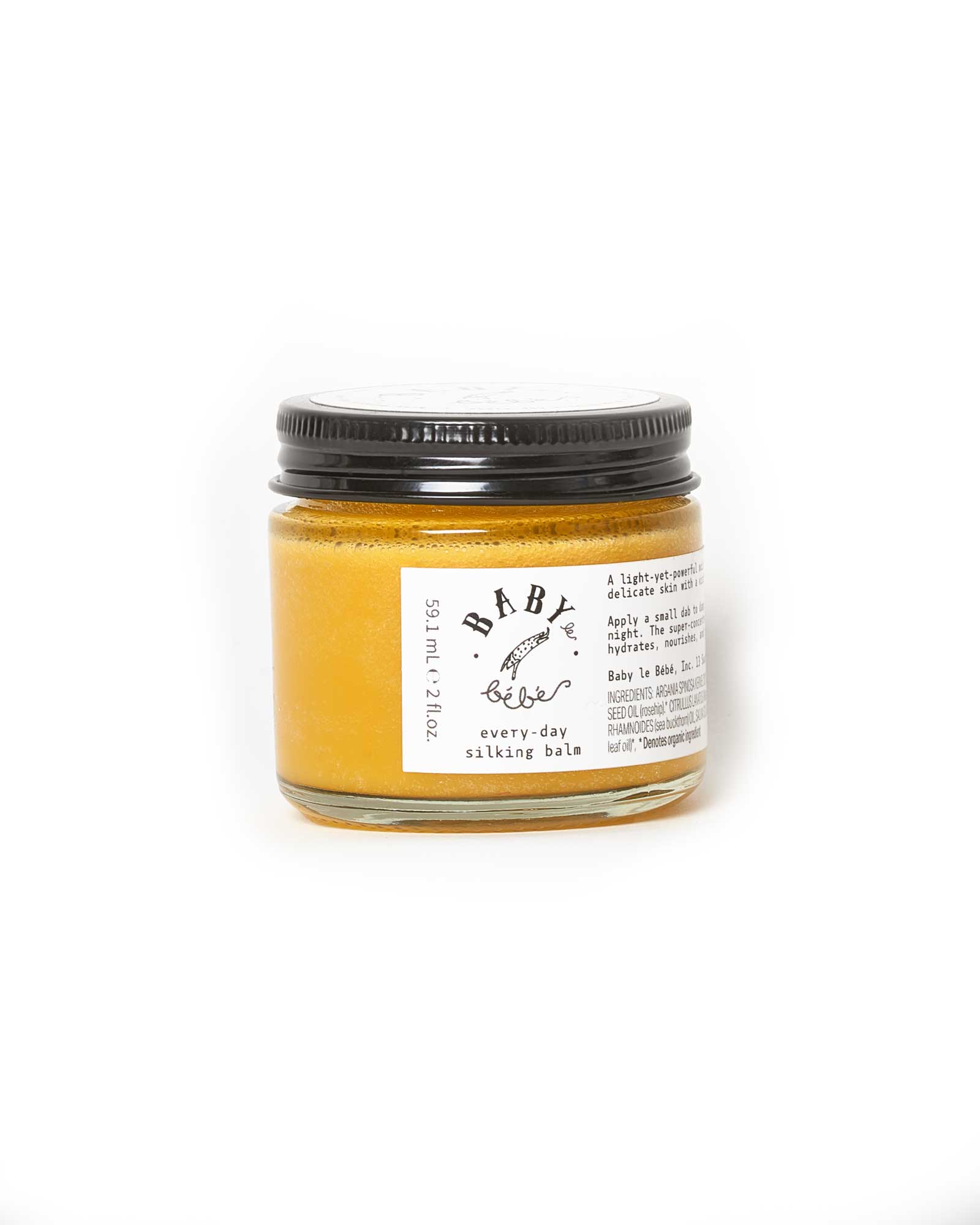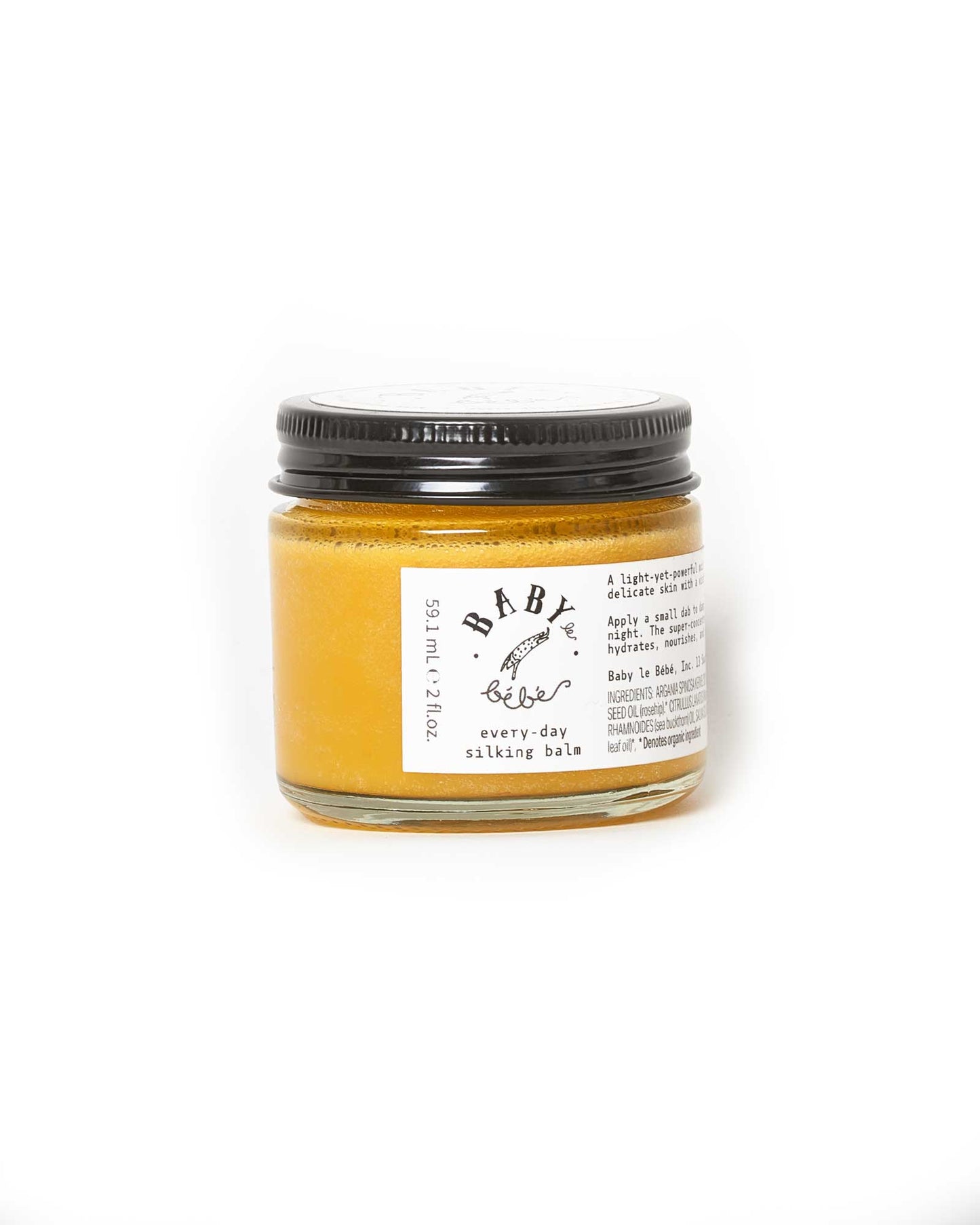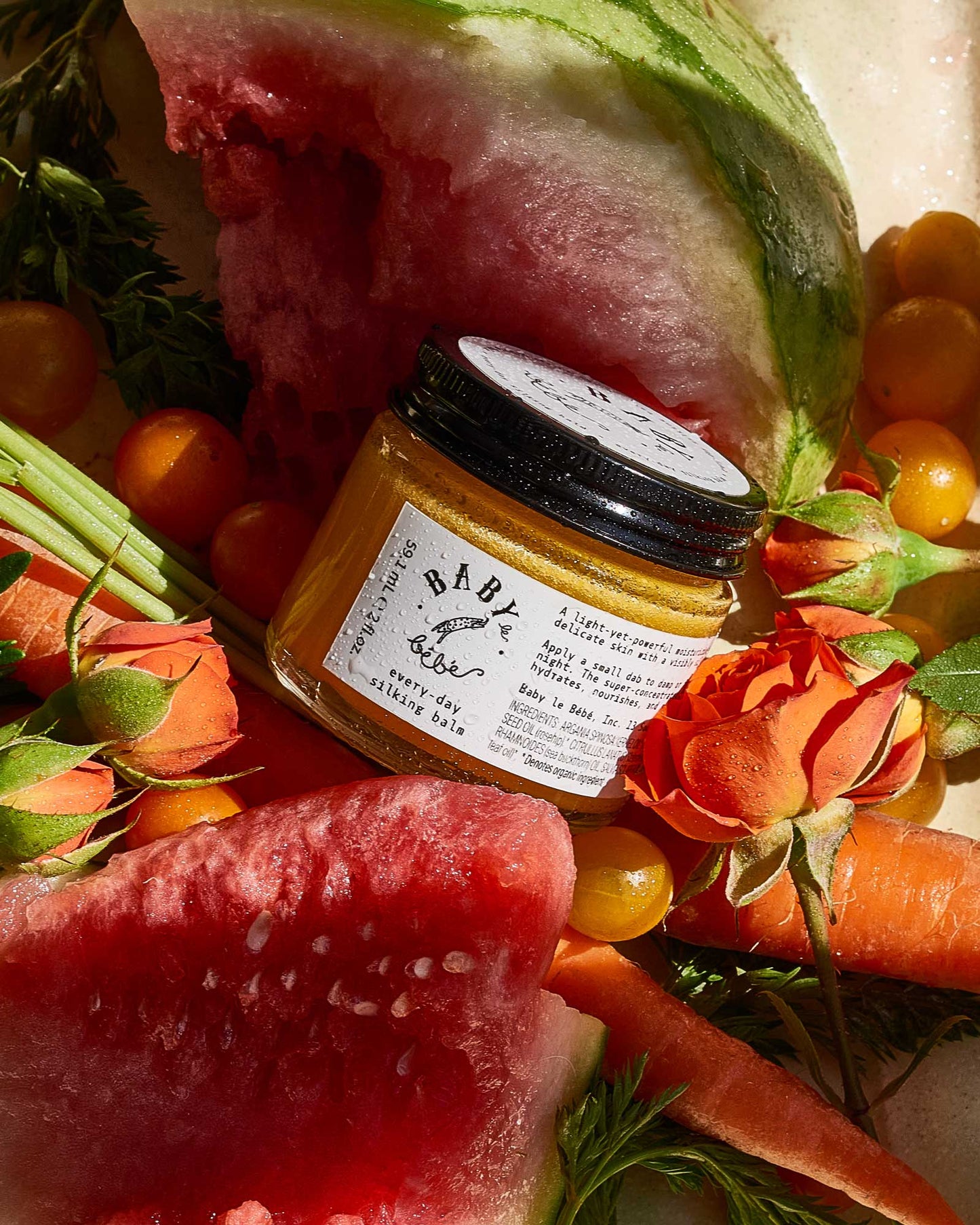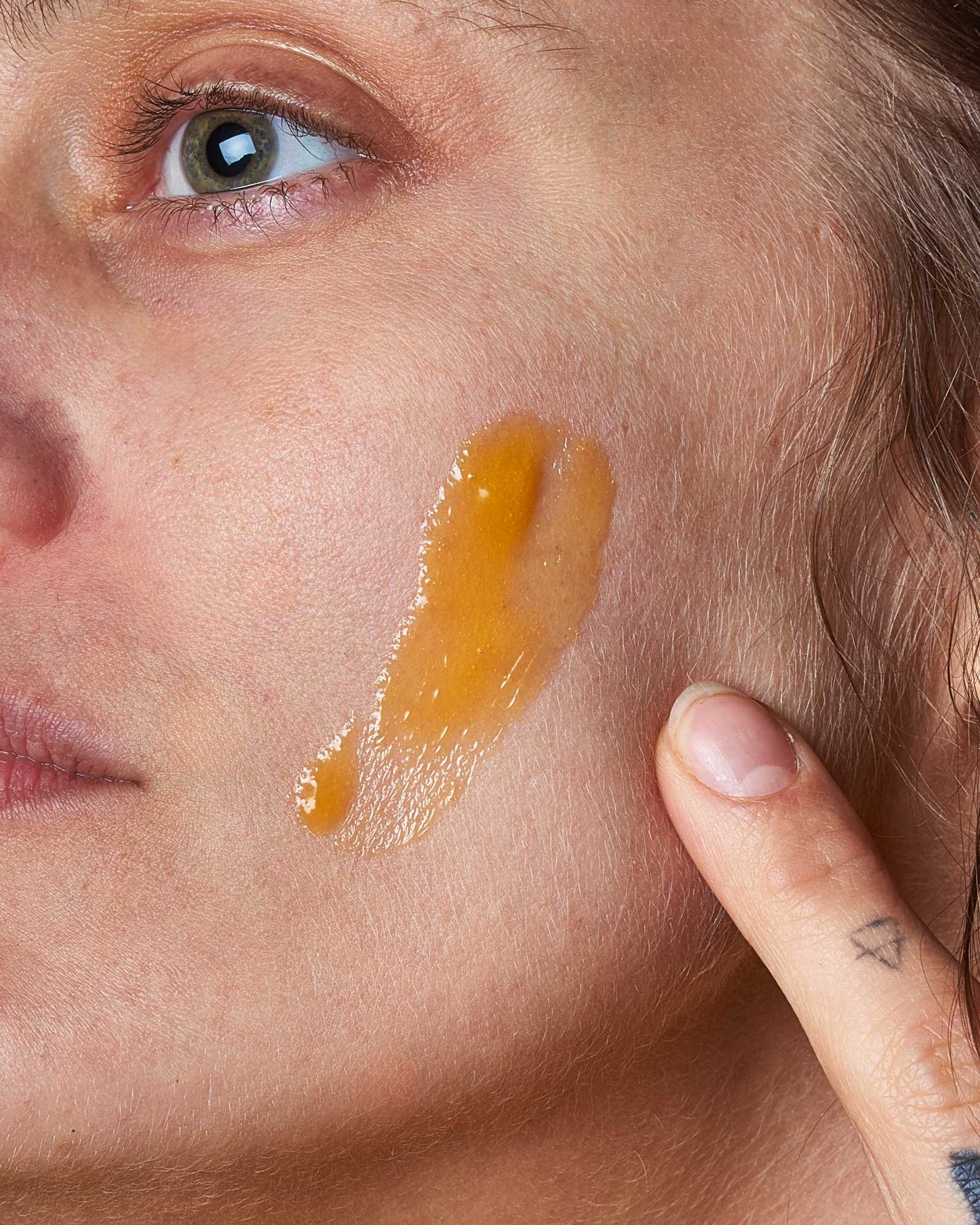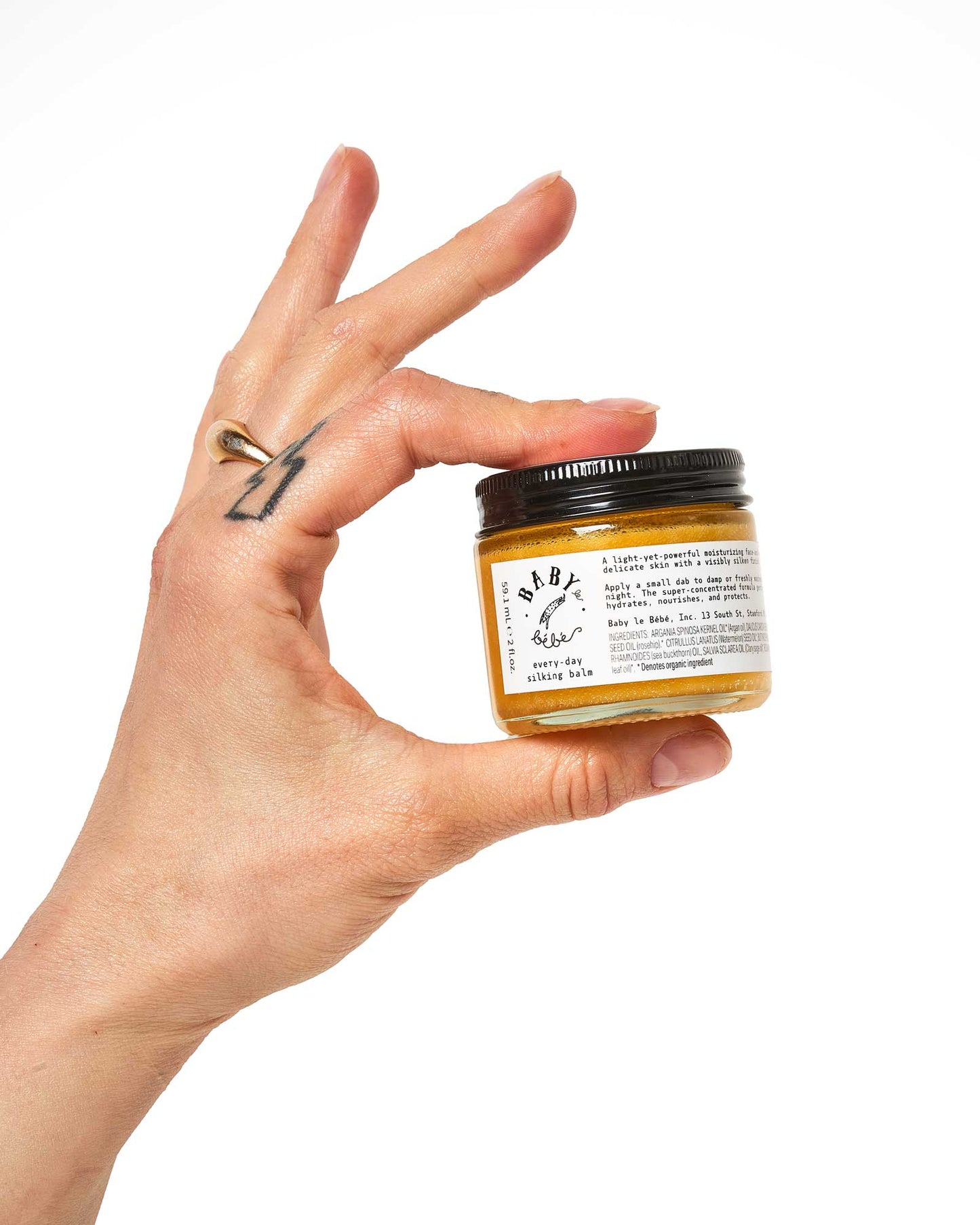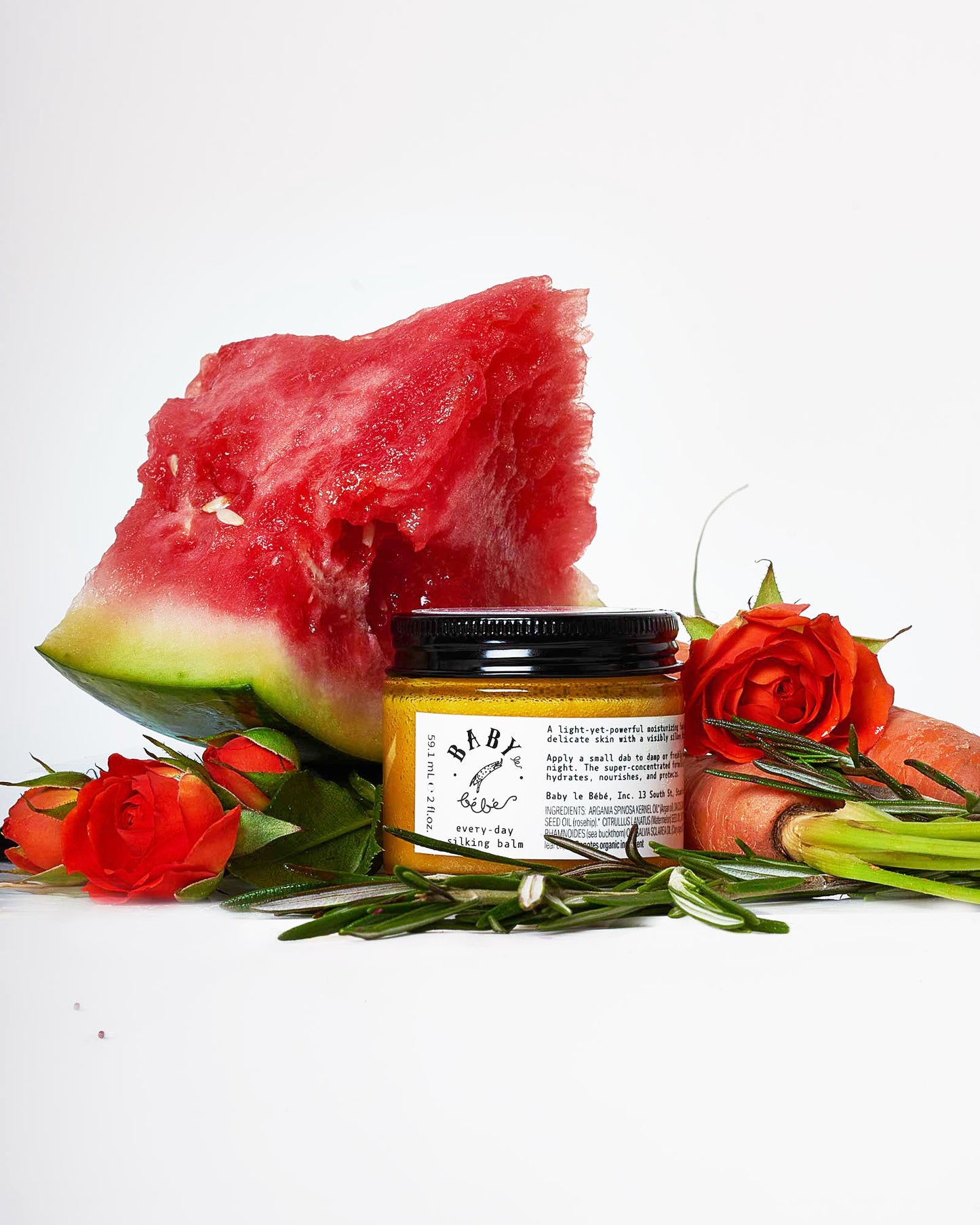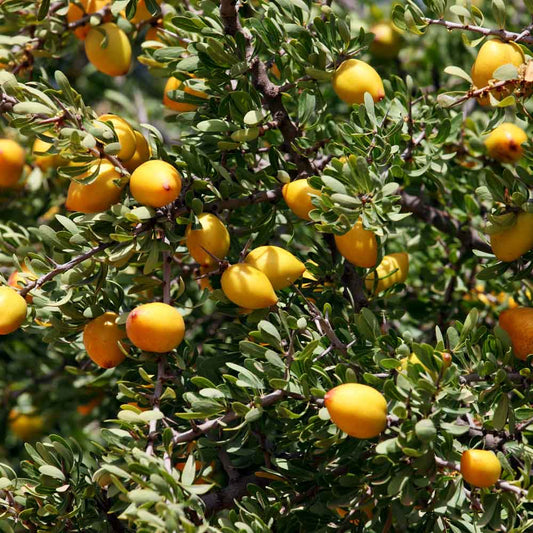Why Plant-Based Balms Like Baby le Bébé’s Are a Smarter Choice Than Beef Tallow for Skin
Beef tallow has recently resurfaced as a trending skincare ingredient, with some influencers touting it as a “natural” alternative to conventional moisturizers. And while it is natural in the most literal sense, it raises important questions — not only about sustainability and sourcing, but also about what’s actually best for your skin.
At Baby le Bébé, we believe in using intelligently formulated, plant-based skincare that works in harmony with the skin barrier. Our Every Day Silking Balm is a nutrient-dense blend of botanical butters and oils — chosen for their proven benefits, their skin compatibility, and their sustainability.
Here’s how the two approaches compare.
What Is Beef Tallow in Skincare?
Beef tallow is rendered animal fat, typically from cows. It’s made by slowly heating suet (fat surrounding the kidneys) to extract pure fat, which is then solidified into a balm-like texture. In skincare, it's used as an occlusive moisturizer — meaning it forms a protective layer on the skin to prevent moisture loss.
It contains:
Saturated fats (like palmitic and stearic acid)
Small amounts of fat-soluble vitamins (A, D, E, and K)
Some people claim it mimics the skin's natural oils — but there's more to the story.
Why Botanical Lipids Are Better for Skin
Plant-based butters and oils — like those used in the Every Day Silking Balm — contain a much wider spectrum of beneficial nutrients, including:
Essential fatty acids (EFAs) like linoleic acid (omega-6) and alpha-linolenic acid (omega-3), which are critical for skin barrier health
Antioxidants such as beta-carotene and vitamin C precursors
Phytosterols, which soothe inflammation and support repair
Bioavailable vitamins A and E, in stable, non-sensitizing forms
How Baby le Bébé’s Formula Compares
Let’s look at a few key areas where your balm excels:
✅ Fatty Acid Profile That Mirrors Human Skin — Without Saturation Overload
Beef tallow is high in saturated fats, which can be occlusive but may also congest the skin or feel heavy. Our balm uses linoleic- and oleic-rich oils like watermelon seed, rosehip, and argan, which:
Absorb beautifully without clogging pores
Support lipid balance in dry and combination skin
Offer a smoother, non-greasy finish
✅ Naturally Rich in Antioxidants
Our ingredients — like sea buckthorn, carrot seed, and rosemary — are packed with protective compounds like:
Beta-carotene (provitamin A)
Vitamin E (tocopherol)
Polyphenols that calm irritation and prevent oxidative damage
Beef tallow, on the other hand, has very low antioxidant content unless fortified.
✅ Supports Skin Function, Not Just Seals It In
While tallow can form a barrier, it doesn’t offer much in terms of active skin recovery. The Every Day Silking Balm:
Delivers nutrients directly into the skin
Helps support collagen function, cellular turnover, and resilience
Leaves skin soft, nourished, and supported — not just coated
Plant-Based Formulation, Ethical Roots
In addition to performance, the Every Day Silking Balm reflects a conscious choice:
No animal byproducts
No industrial rendering process
Ingredients that are organic and biocompatible
For many users — especially those with sensitive or reactive sin — that’s more than a preference. It’s peace of mind.
Conclusion: Whole-Plant Nourishment Over Rendered Fat
Beef tallow may provide a simple form of moisture, but it lacks the complexity, stability, and bioactive support that a thoughtfully crafted plant-based balm delivers. With ingredients like shea butter, watermelon seed oil, rosehip, sea buckthorn, and carrot seed oil, Baby le Bébé’s Every Day Silking Balm offers comprehensive nourishment that supports skin health at every level.
No animal ingredients. No compromises. Just high-performance botanical skincare — made for everyday softness and long-term skin strength.
-
Rawlings, A.V., & Harding, C.R. (2004). Moisturization and skin barrier function. Dermatologic Therapy, 17(s1), 43–48. https://doi.org/10.1111/j.1396-0296.2004.04s1005.x
– Overview of lipid barrier repair and the role of fatty acids in moisturization. -
Kochhar, A. (2017). Essential Fatty Acids and Skin Health. International Journal of Molecular Sciences, 18(11), 2292. https://doi.org/10.3390/ijms18112292
– Breaks down omega-3 and omega-6 function in skin health. -
Ziboh, V.A., Miller, C.C., & Cho, Y. (2000). Metabolism of polyunsaturated fatty acids by skin epidermal enzymes: generation of anti-inflammatory and antiproliferative metabolites. American Journal of Clinical Nutrition, 71(1 Suppl), 361S–366S. https://doi.org/10.1093/ajcn/71.1.361s
– Describes anti-inflammatory mechanisms of plant-derived EFAs. -
Calder, P.C. (2016). Omega-3 fatty acids and inflammatory processes: from molecules to man. Biochemical Society Transactions, 45(5), 1105–1115. https://doi.org/10.1042/BST20160474
– Supports omega-3 benefits in barrier function and inflammation. -
Dweck, A.C. (2005). Formulating with Shea Butter. Cosmetics & Toiletries, 120(12).
– Discusses fatty acid content and skin compatibility of shea butter. -
USDA FoodData Central. (2023). Fatty acid composition of edible fats and oils.
https://fdc.nal.usda.gov/
– Used to compare fatty acid profiles of tallow vs. plant oils (e.g., avocado, rosehip, sunflower). -
Oliveira, M.E.G., et al. (2017). Beef tallow: Nutritional composition and technological properties. Food Research International, 102, 120–130. https://doi.org/10.1016/j.foodres.2017.09.071
– Analyzes the saturated fat content and limitations of rendered tallow. -
Burdock, G.A. (2010). Fenaroli's Handbook of Flavor Ingredients (6th ed.). CRC Press.
– Referenced for antioxidant content in essential oils (e.g., rosemary, carrot seed).
